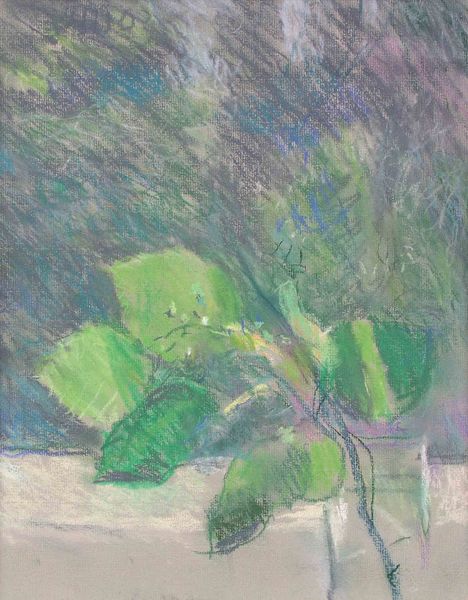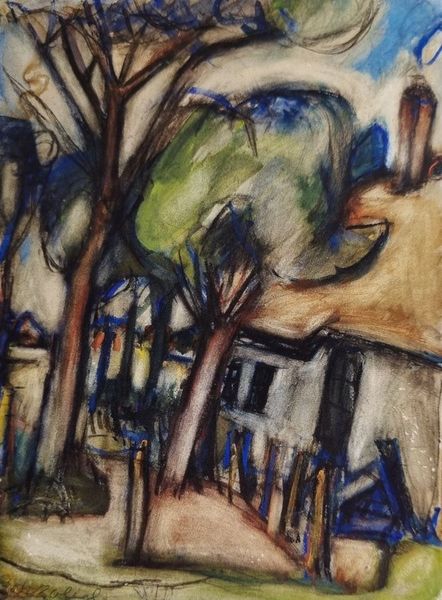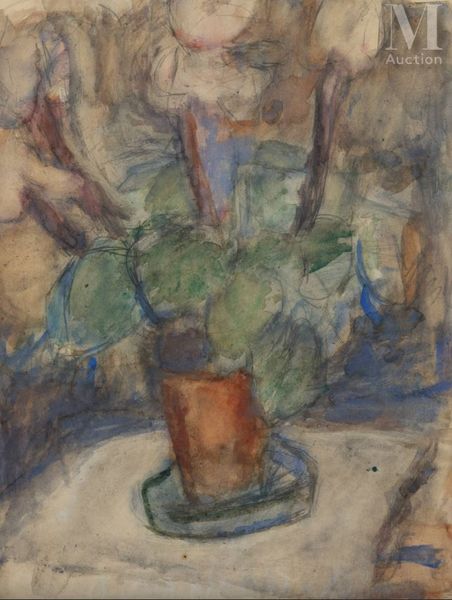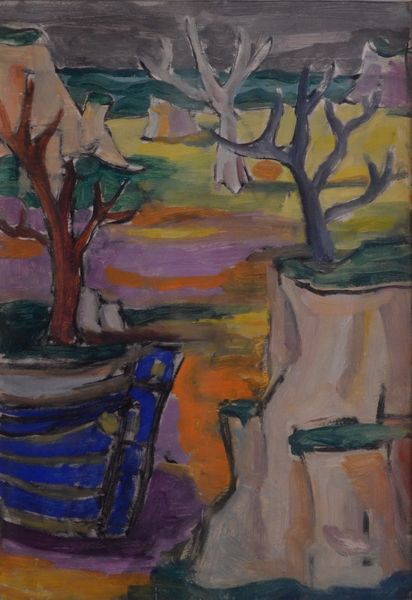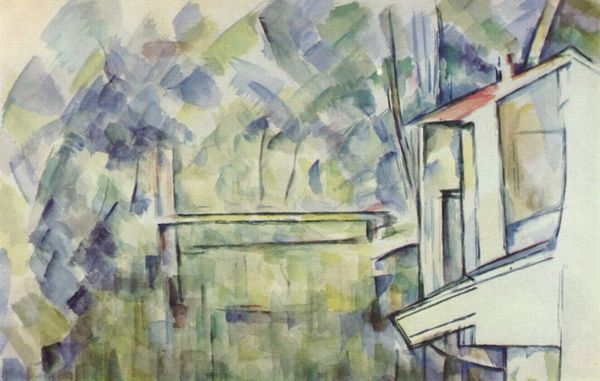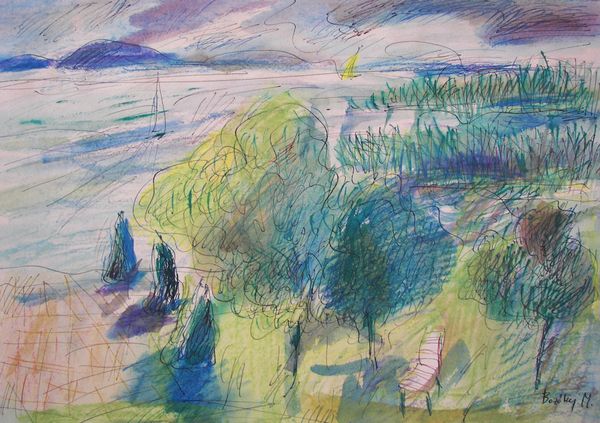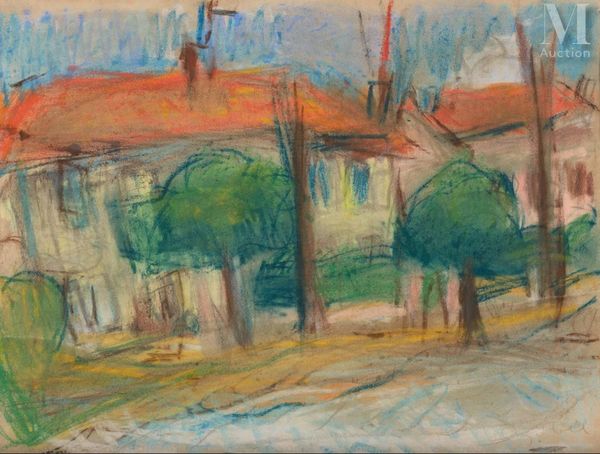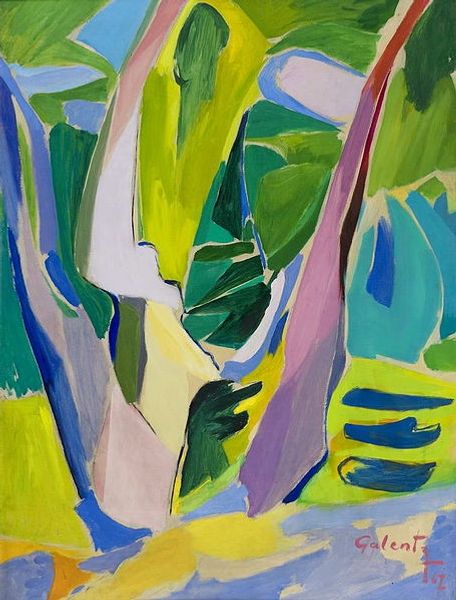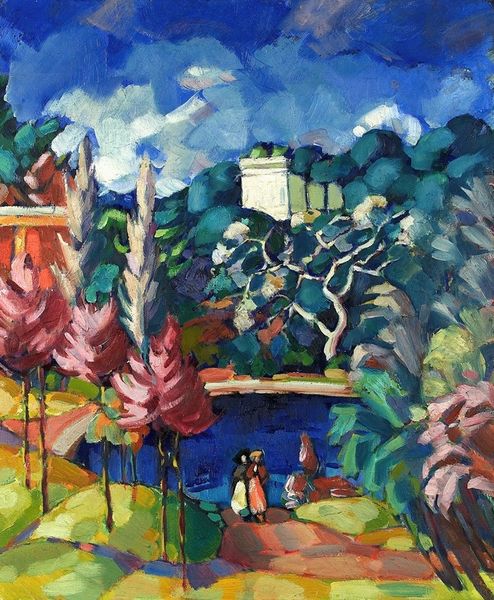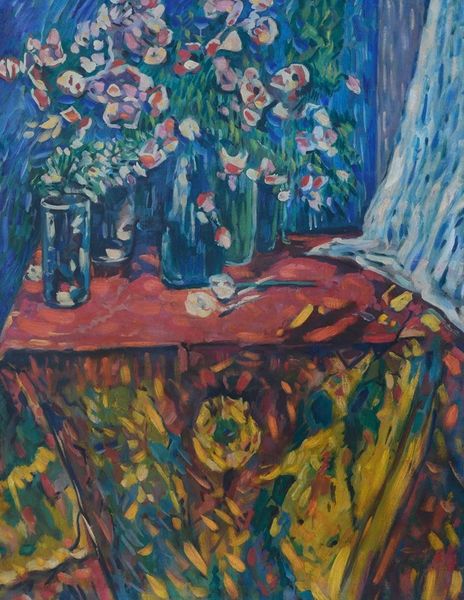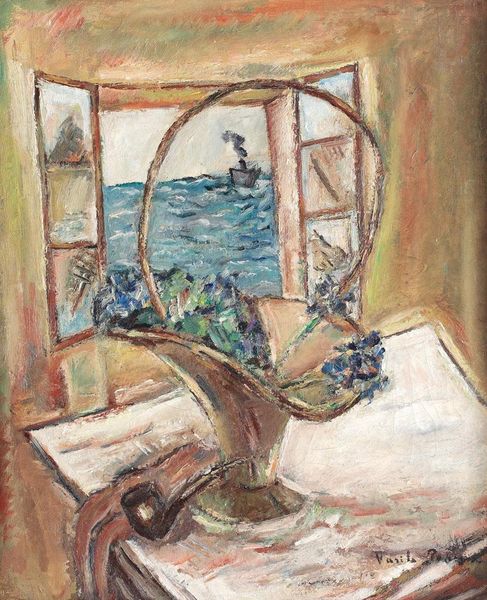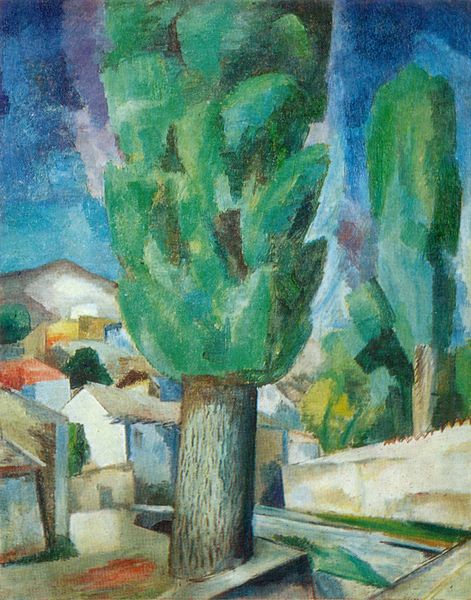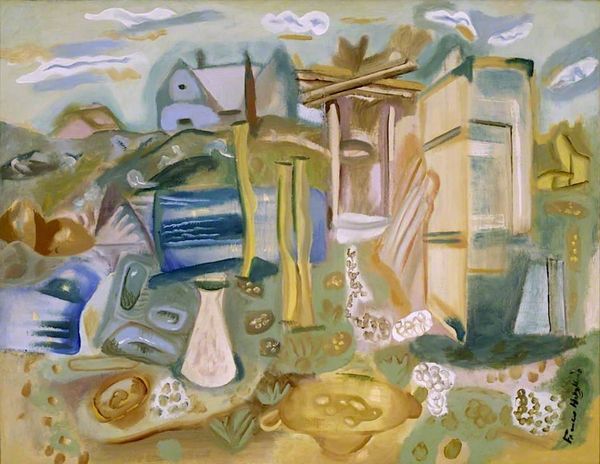
Copyright: Public domain
Editor: So, this is Vasile Popescu's "Terrace of the Royal Palace in Balchik," painted in 1933. It looks like an impressionistic oil painting, probably done en plein air. There's a definite mood of relaxation, of being in a cool, shady spot. How do you interpret this work, considering its historical context? Curator: Balchik, in the 1930s, was more than just a beautiful location. It was Romanian territory and a cultural hub, favored by Queen Marie. Artists like Popescu flocked there, drawn by royal patronage and the area's unique blend of East and West. The palace itself, a project of the Queen, was intended as a space of encounter. Does this affect how we understand Popescu’s choice of subject? Is he merely capturing a pretty scene, or is there something more? Editor: I see your point! The palace wasn't just a palace; it represented a very specific cultural agenda. Do you think he's commenting on the Romanian royal family, by painting on its grounds? Or is he simply trying to profit off of the place’s allure? Curator: That's hard to say definitively without more documentation of Popescu's own views. However, paintings of this period were almost always connected, directly or indirectly, to politics. By focusing on the peaceful terrace, he might be reflecting the cultivated tranquility the royals hoped to project, or subtly commenting on their disconnection from the daily realities of the population. Editor: That’s interesting! I had only considered the painting formally before, but framing it in that socio-political context really deepens my understanding. Curator: Exactly! And seeing it as an image within a broader network of patronage, place and the politics of imagery provides us a lens into the complexities of the interwar period in Europe.
Comments
No comments
Be the first to comment and join the conversation on the ultimate creative platform.
